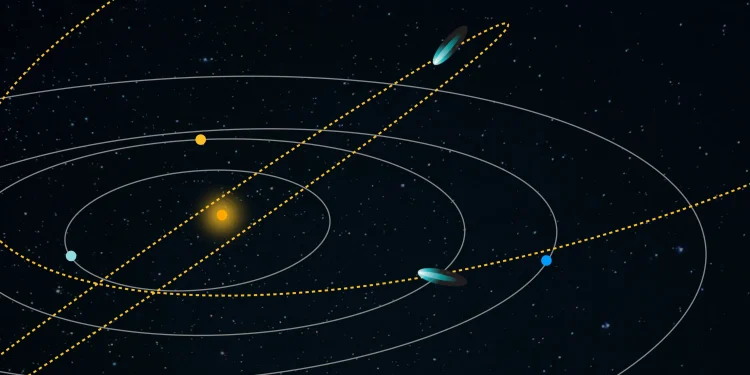Skywatchers may be able to spot not one but two comets this October, which would give the night sky a new level of brilliance. Seeing more than one comet per month is remarkable and quite rare.
C/2025 R2 (SWAN) and C/2025 A6 (Lemmon) are expected to make their closest approach to Earth around October 21. It is best to observe them with binoculars in the night sky. The two comets should be visible in the western and southern skies about 45 minutes after sunset, according to Forbes.
Comets are leftovers from the early stages of our solar system about 4.6 billion years ago, according to NASA. They are mainly made of ice covered in dark organic matter.
Where to observe comet C/2025 R2 (SWAN)
Having trouble viewing our charts? Click here to view them.
Comet C/2025 R2 (SWAN) has an estimated brightness of +6.1 magnitude (a measure of visual brightness), which, in a dark, moonless sky, places it barely beyond the range of the naked eye. The comet can be best observed using binoculars or a telescope.
Until October, the comet could continue to shine or even increase its visibility, so that it will be visible to the naked eye in the night sky on October 20, according to StarWalk, a real-time astronomical application for stargazing. Its visibility in the Northern Hemisphere will gradually increase as we approach mid-October.
Comet SWAN will pass through the constellations Libra, Scorpio, Ophiuchus, Serpens, Scutum, Sagittarius, Aquila and Aquarius, according to Space.com.
Where to observe comet C/2025 A6 (Lemmon)
Comet Lemmon will pass near Earth in late October and should be easily visible in the evening sky for those in the Northern Hemisphere. The comet can be best observed using binoculars in mid-October and November, when its brightness reaches around magnitude 5. Comets of this type typically brighten dramatically near perihelion, or the closest point a comet has to Earth, according to StarWalk.
Upcoming comets to see
Would you like to see more comets? You’re lucky: several are approaching Earth. This celestial calendar includes important comets that will approach Earth in late 2025 and early 2026.
Good luck getting a glimpse!
SOURCE NASA Research, StarWalk.space, Forbes and USA TODAY










